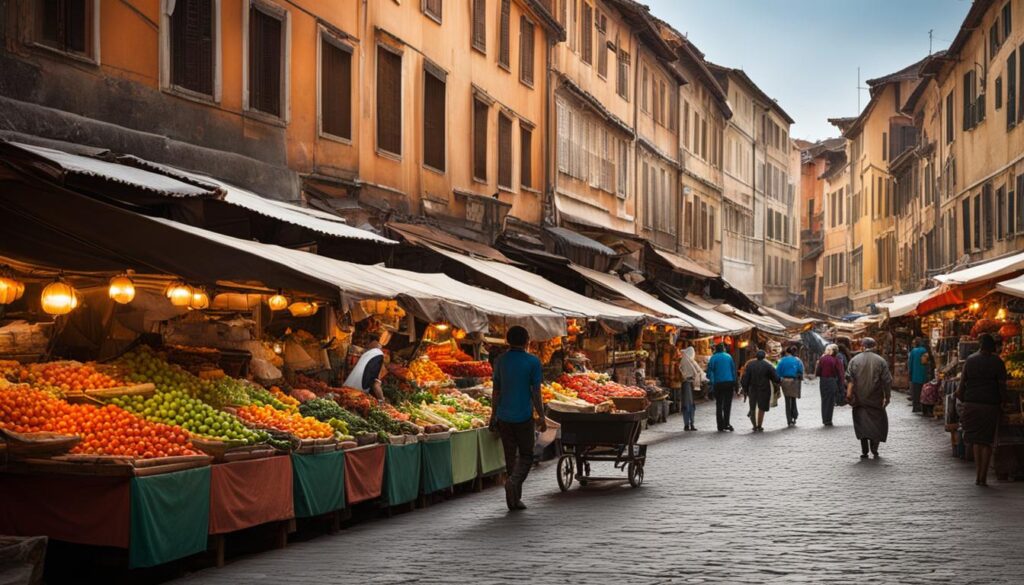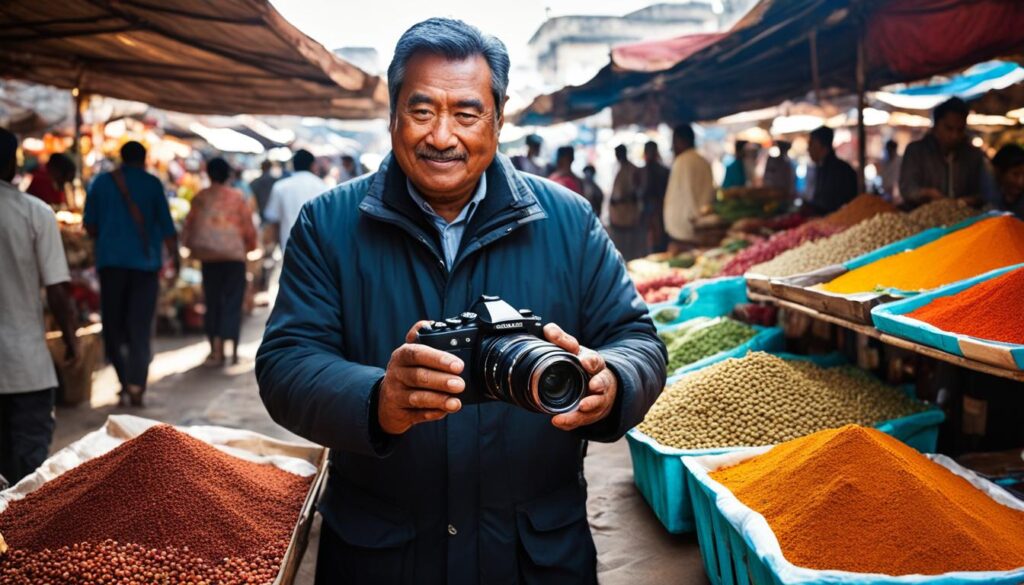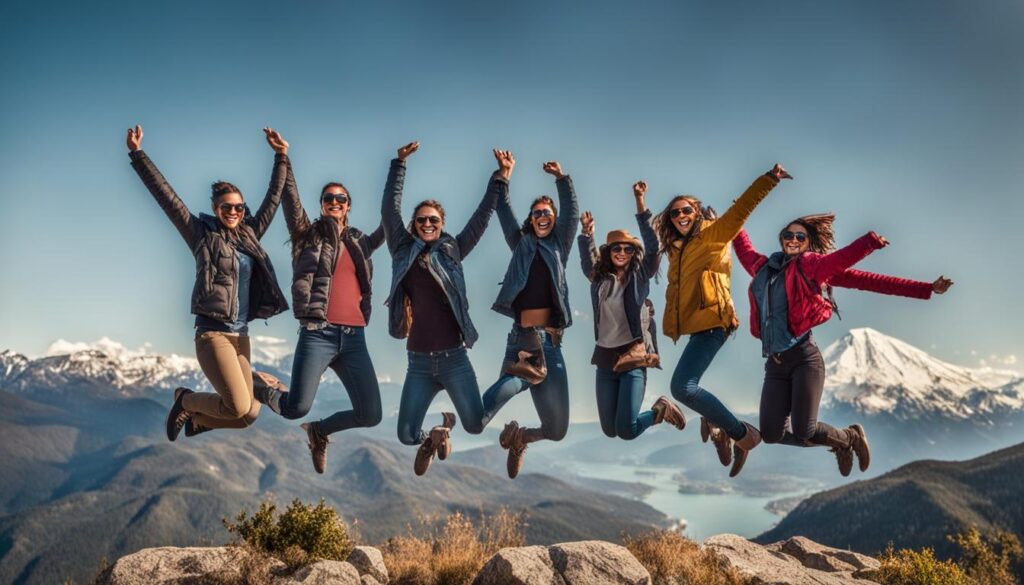How can I capture great travel portraits of locals and fellow travelers? Traveling to new places often means encountering diverse and fascinating people, and photographing them is a wonderful way to capture the essence of your journey. Whether you’re exploring bustling cities or remote villages, capturing the unique and authentic moments through travel photography is a great way to bring those memories back home with you.
In this article, we’ll explore the art of capturing great travel portraits of locals and fellow travelers. From understanding the power of travel portraits to connecting with your subjects and choosing the right equipment and gear, we’ll provide you with practical tips and techniques to enhance your travel photography skills. Let’s dive in!
The Power of Travel Portraits
Travel portraits have the power to capture the essence of a place and its people. Whether it’s a candid snapshot of a local or a carefully posed portrait of a fellow traveler, travel photography allows you to create lasting memories and share your experiences with others.
But what makes travel portraits so powerful? It’s their ability to convey the unique spirit of a place through the people who inhabit it. By capturing authentic travel moments, you can create images that transport viewers to another time and place.
To truly capture the essence of your travels through photography, there are a few tips to keep in mind. First, aim for authenticity. Don’t be afraid to capture imperfect moments or candid expressions – these can often be the most powerful images.
Secondly, pay attention to the details. From the colors and textures of a local farmer’s clothes to the lines and wrinkles on a street vendor’s face, small details can tell a bigger story and add depth to your photography.
Lastly, be respectful and sensitive to the cultures and communities you’re photographing. Ask for permission before taking someone’s photo, and be mindful of customs and traditions that may be different from your own. By approaching travel photography with empathy and an open mind, you can capture meaningful and authentic travel portraits.
Connecting with Locals
When it comes to travel photography, connecting with locals is key to capturing stunning portraits that tell a unique story. Building a rapport with the people you’re photographing will not only create a more comfortable and collaborative environment, but also give insight into the local culture and customs. Remember, it’s not just about snapping a quick photo and moving on, but taking the time to engage with your subjects and show a genuine interest in their lives.
One crucial element of connecting with locals through photography is respect. Always ask for permission before taking someone’s photo and be mindful of cultural sensitivities or taboos. Additionally, be open to feedback and suggestions from your subjects regarding poses or locations, as this can lead to more authentic and visually interesting shots.
Effective communication is also important in establishing a comfortable and fun environment for both you and your subjects. Practice words and phrases in the local language to break the ice and show genuine interest in their culture. Staying patient, friendly, and enthusiastic can also go a long way in making your subjects feel at ease.
In summary, connecting with locals through photography is a vital part of capturing authentic and stunning travel portraits. Be respectful, communicative, and open to collaboration, and you’ll be rewarded with unforgettable moments and stories that truly capture the essence of your travels.
Posing Tips for Travel Portraits
When capturing travel portraits, posing your subjects in a natural and engaging way can make all the difference. Here are some practical posing tips for travel portraits that can help you create stunning images:
- Encourage your subject to relax and be themselves. A natural expression and body language is key to creating a candid and genuine portrait.
- Place your subject in a comfortable pose that best highlights their personality, style, and surroundings. For example, if your subject is an artist, try capturing them painting in their studio or using their artwork as a backdrop.
- Use leading lines such as curving roads, stairs, or bridges to guide your subject’s movement and create a dynamic composition.
- Don’t be afraid to give your subject specific instructions, such as turning their head towards the camera or adjusting their posture. But be mindful of over-posing, which can make your portrait look stiff and unnatural.
- When working with groups, use different levels and positions to create a balanced and harmonious composition. For example, have some individuals sit, while others stand or lean against a wall.
- Capture candid moments by encouraging your subject to walk, talk, or engage in their daily routine, while you snap candid shots in the background.
Keep in mind these tips when capturing stunning travel portraits that are both engaging and natural-looking.
Composition and Framing
Mastering the art of composition and framing is key to taking stunning travel portraits that capture the essence of your journey. By using techniques such as rule of thirds, leading lines, and framing, you can create visually appealing and compelling photographs that tell a story.
When framing your subject, consider their surroundings and how they can add depth and context to the image. Use elements such as archways, door frames, or windows to create a frame within a frame, drawing the viewer’s eye to the subject.
| Technique | Description | Example |
|---|---|---|
| Rule of thirds | Divide the frame into equal thirds and place the subject along one of the lines or at the intersection points. |  |
| Leading lines | Use natural or man-made lines to lead the viewer’s eye towards the subject. | |
| Framing | Use elements within the scene to frame the subject, creating a visually interesting composition. |  |
Remember that composition and framing are subjective, so experiment with different techniques and find what works best for your style and subject. With practice, you’ll be able to create captivating travel portraits that capture authentic travel moments.
Lighting Techniques
When it comes to travel photography, lighting is key. It can make or break a shot. In this section, we will explore different lighting techniques to enhance your travel portraits and capture authentic travel moments.
Natural Light
Natural light is one of the best light sources for travel portraits, as it can create a warm, inviting feel. Early morning and late afternoon are the best times to shoot with natural light as the sun isn’t too harsh. You can also use reflectors to bounce light onto your subject, which softens the shadows and creates a more even light balance.
“Natural light is often the most flattering, as it gives your subject a warm, natural glow.”
Artificial Light
If you’re shooting indoors or in low-light conditions, artificial light can be a useful tool. However, it can also create unflattering shadows and skin tones, so it’s essential to use it correctly. Some useful tools include speedlights, softboxes, and light stands.
Silhouettes
A good silhouette shot can be incredibly powerful. To capture one, make sure your subject is standing in front of a bright light source, such as the sun. Set your camera to expose for the light, and your subject will appear as a dark outline.
Candlelight
Candlelight can create a beautiful and intimate atmosphere for portraits, especially when shooting in low light conditions. You can use a fast lens and a high ISO to capture the warm glow of the candles.
Lighting Techniques Summary
| Technique | Best for | Tips |
|---|---|---|
| Natural Light | Outdoor portraits | Shoot during early morning or late afternoon for warm, flattering light |
| Artificial Light | Indoor portraits or low-light conditions | Use light modifiers to soften shadows and create even lighting |
| Silhouettes | Capturing mood and atmosphere | Place the subject in front of a bright light source |
| Candlelight | Low light or intimate settings | Use a fast lens and high ISO to capture the warmth of the candles |
Experimenting with different lighting techniques can yield incredible results in your travel portraits. Remember to always be respectful of your subjects’ culture and environment when capturing moments.
Equipment and Gear
When it comes to travel photography, having the right equipment and gear can make all the difference in capturing great travel portraits. Here are some essential items to consider:
| Item | Recommendation |
|---|---|
| Camera | A high-quality DSLR or mirrorless camera is ideal for travel photography. Consider models such as the Canon EOS R5 or the Sony Alpha 7R IV for exceptional image quality and versatility. |
| Lenses | Having a variety of lenses can help you capture a range of shots. Consider a portrait lens such as the Canon EF 85mm f/1.4L IS USM or a wide-angle lens like the Sony FE 16-35mm f/2.8 GM. |
| Reflectors | Reflectors are a useful tool for manipulating light and creating different moods in your images. Consider a collapsible reflector such as the Neewer 43 Inch/110cm 5-in-1 Collapsible Multi-Disc Light Reflector. |
| Tripod | A sturdy tripod can be essential for capturing low-light and long-exposure shots. Consider a lightweight and compact option like the Manfrotto MT190XPRO4. |
In addition to these items, consider bringing extra batteries, memory cards, and a camera bag to protect your gear while traveling.
Remember, while quality equipment can enhance your travel photography, don’t let the gear limit your creativity. With the right skills and techniques, you can still capture stunning travel portraits with even a basic camera setup.
Editing and Post-Processing
Once you have captured your memorable travel portraits, it’s time to enhance your images and bring out their full potential through editing and post-processing. Here are some software, tools, and tips to help make your travel photography truly shine:
1. Choose the right software
There are numerous software options available for editing and post-processing your travel portraits. Adobe Lightroom and Photoshop are popular choices for their comprehensive editing tools and user-friendly interfaces. Other options include Capture One and ON1 Photo RAW.
2. Adjust exposure, contrast, and color
During the editing process, you may want to adjust the exposure, contrast, and color balance of your portraits to create a more vibrant and appealing image. Experiment with the sliders in your chosen software to find the perfect balance.
3. Remove distractions
When editing your travel portraits, take the time to remove any distracting elements from the image. This could include unwanted objects, blemishes, or other imperfections that may draw the viewer’s eye away from the subject.
4. Use presets and filters
Preset styles and filters can be a great way to add a unique touch to your travel portraits. Many software options come with built-in presets, or you can create your own to speed up your editing process and achieve a consistent look throughout your portfolio.
5. Don’t overdo it
While it can be tempting to apply numerous edits and filters to your travel portraits, be mindful not to overdo it. Remember that your goal is to enhance the natural beauty and authenticity of your images, not to create overly stylized or artificial-looking photographs.
By following these editing and post-processing tips, you can bring out the full potential of your travel portraits and create timeless memories that will last a lifetime.
Preserving Memories
After capturing stunning travel portraits, it’s important to save those unforgettable moments in a tangible form. Printed photographs and photo books are a great way to preserve memories and revisit them whenever you want.
By taking memorable travel portraits, you’ve captured the essence of travel through portraits. Now it’s time to showcase those portraits in creative ways. Here are some ideas to consider:
- Create a photo album or scrapbook featuring your favorite travel portraits. You can organize them by location, subject, or theme.
- Print your photos on canvas or framed prints to hang on your walls and enjoy every day. This way, you can turn your home into a gallery of your travel memories.
- Make a photo collage or mural of your travel portraits. These can make a great statement piece in any room.
- Share your photos on social media or photo-sharing platforms to inspire others and connect with fellow travelers.
Whichever method you choose, by preserving your travel portraits, you can relive your adventures and travel experiences for years to come.
Conclusion
Now that you have learned about capturing great travel portraits of locals and fellow travelers, it’s time to put your skills to the test. Remember to approach your subjects with respect and cultural sensitivity, communicate effectively, and use your creativity to capture genuine moments that reflect the essence of travel. By following the tips and techniques outlined in this article, you’ll be able to create stunning travel portraits that you can cherish for a lifetime.
Whether you’re an amateur or a professional photographer, traveling offers an opportunity to capture unique and authentic portraits that tell a story. Don’t be afraid to experiment with different poses, compositions, and lighting techniques. With practice and patience, you’ll be able to master the art of capturing unforgettable travel portraits that encapsulate your journey’s essence.
So what are you waiting for? Grab your camera, explore the world, and start capturing those amazing travel portraits of locals and fellow travelers.















































